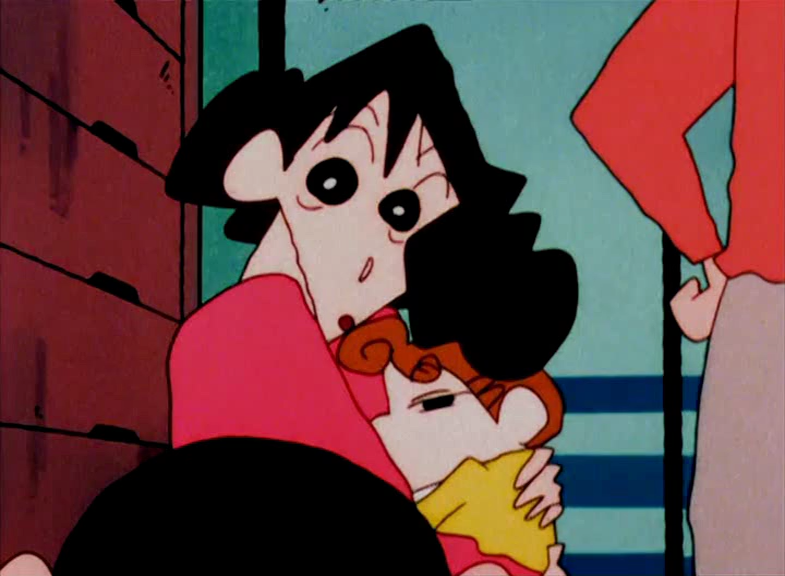
Are they saving time so that they can lead up to the next program? Probably. I am quite confused as well as to why they eliminated the ending theme song on original broadcasts (unless they’re promoting another Shin-chan movie, they would use the movie’s theme song) and then they would use the ending theme song from 2012 on reruns. I understand that whatever the Japanese equivalent of “a 90s kid” is grew up on that song but it just gets annoying after a while. Let me say this though, “Ora wa Ninkimono” is the most overplayed song in the history of the series.

#SHIN CHAN EPISODES IN ENGLISH SERIES#
In fact, I can still remember some of the ending and opening songs from the series from the top of my head. The opening and ending theme songs are some of the most memorable songs that I know of. Sorry Laura Bailey fans.)Įarly 1990s Shin-chan Late 90s – Mid 2000s Shin-chan Late 2000s – Late 2010s Shin-chan under Akiko Yajima Yumiko Kobayashi’s Shin-chan Andew E.’s Shin-chan Laura Bailey’s Shin-chan I believe it has something to do with the direction the show is going in to (we’ll talk more about that later) but the change from a surly five year old to a regular five year old was great, the change from a regular five year old to an effeminate man in a child’s body just kind of weirded me out (and it’s something that Funimation did with their gag dub years ago too and somehow made me hate the Funimation version because that and the fact that they have to rewrite the script a la Ghost Stories to make it “Americanized”, just plainly sucked. dub) although the same can’t be said with the main character’s voice itself and age doesn’t play a factor here since for one, Yumiko Kobayashi is just 42 years old and Akiko Yajima, Shin-chan’s first voice actress, is just 54. I would put in the voice dubbing here and I would say that unlike it’s contemporaries The Simpsons and Chibi Maruko-chan, nobody from the core cast sounded out of character (sorry fans of the Andrew E. Visuals: For the modern anime watcher, they might be turned off by Crayon Shin-chan’s visuals but long time fans will surely find some charm in the art style presented in this anime. There will be two episodes from the 2000s because between 20, the series moved to 16:9 widescreen. Since the series has already gone past the 1000-episode mark and most of the show is episodic in nature, I watched an episode each from each decade from the 1990s up until the present, that being 2021.

The animated series had three directors during its run: Mitsuru Hongo from the start of the series until 1992-1996, Keiichi Hara from 1996 to 2004 and Yuji Muto who handles directing duties up to the present day.

It was then adapted to an animated series two years later and said anime series is still ongoing ever since. The manga follows the day to day adventures of the Nohara family, specifically Shinnosuke Nohara, a naïve and naughty five-year-old who always causes trouble to whoever he’s around with. The manga series lives on under the name Shin Crayon Shin-chan. Arafune in Gunma but his staff decided to continue on until the original manga’s end. The series should’ve ended with the death of its author Yoshito Usui after he went hiking at Mt. Crayon Shin-chan is a manga series that ran from August of 1990 to Jexactly eleven years ago as of this writing.


 0 kommentar(er)
0 kommentar(er)
